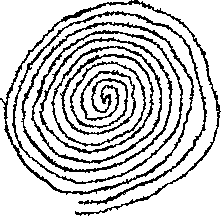NEW


Would the three double spirals represent mother (yellow), father (blue) and the child(green)?
I found some text in "Waar lag Troje?" (Peursen, A. van, bres
220,
juni/juli 2003, page 99), which describes the work of a Dutch writer
(Iman
Jacob Wilkens on Troy
in England) and refers to the triskele ![]() (I translated the below from Dutch):
(I translated the below from Dutch):
"The symbol of celtic life vision was the triskele; an icon of three
united waves. In all things on earth this unity can be seen, consisting
of three co-existing elements: beside the two counter-elements
(recognizable
as dualism) is a third element that connects and embraces the two
counter-elements."
This text describes very well the above picture:

I would like to thank the following people for their help and constructive feedback: John Cleff and all other unmentioned people. Any remaining errors in methodology or results are my responsibility of course!!! If you want to provide constructive feedback, let me know.